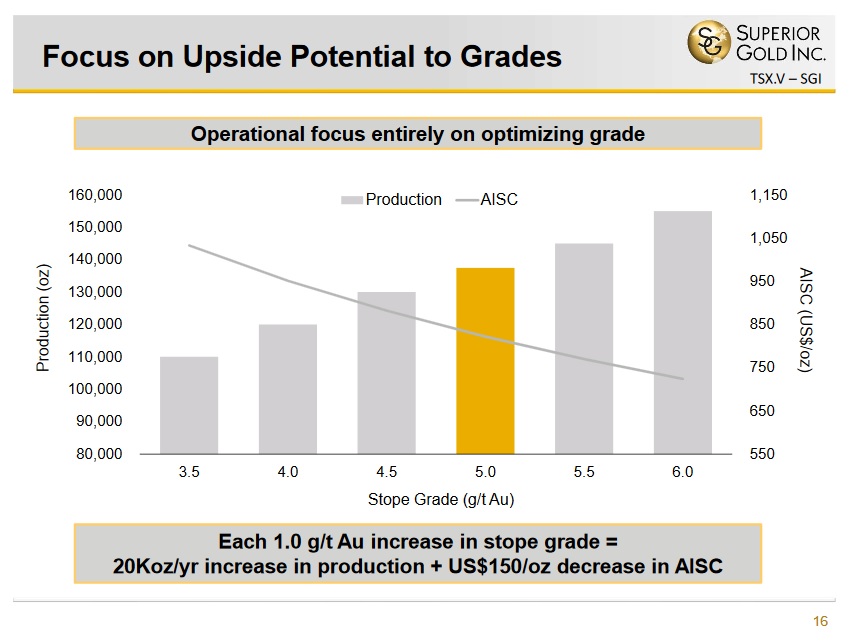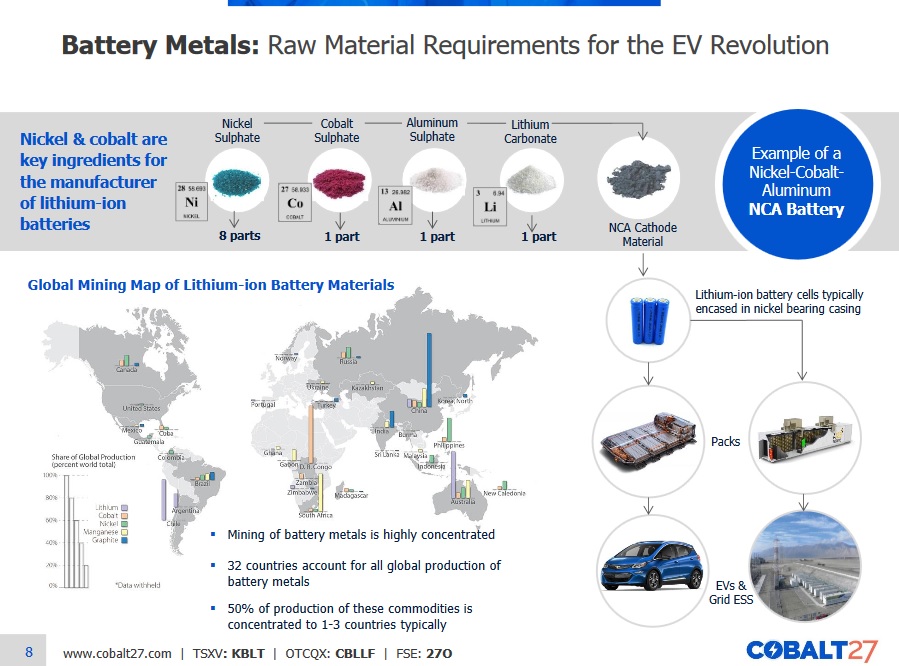
“Where The Smart Money Goes Prospecting”
Highlights from 3 especially interesting companies who just presented at the Precious Metals Summit in Zurich.
Tonight we will start with an Australian Gold miner (a deal that seems too good to be true), then quickly highlight a little known $7 million market cap company exploring Brazil’s Tapajos region (home to one of the world’s largest placer Gold rushes of the 1970‘s and 1980‘s) and ultimately end with some perspective from a leading player in the burgeoning Cobalt industry.

Superior Gold Inc. (SGI, TSX-V)
In addition to the Precious Metals Summit, digging through the dustbin of projects being neglected by major miners is also a good place to go prospecting. Over the years there have been quite a few examples of successful companies who were born this way. With the Plutonic mine (Australia), formerly owned by Barrick, which produced 300,000 ounces of Gold in its best year (>5.5 million ounces to date), Superior expects to add its name to that list.
I’d say they’re off to a good start. During the first 2 years of Superior’s ownership they’ve generated more cash from operations than the $33 million purchase price for Plutonic. On top of that, they’ve funded Hermes, a new open-pit mine, via internally generated cash (a capital investment of $12 million).
By the sounds of it, Superior is on track to produce about 103,000 ounces for 2018 (the lower end of guidance of 100,000 to 110,000 ounces), but still up roughly 25% versus last year.
And always keep in mind, +300,000 ounces once churned out of Plutonic, so the mine is capable of considerable growth from current levels. Superior has a 1.2 Mtpa worth of mill capacity sitting on care and maintenance. Under a scenario whereby they located new sources of ore, additional production can come online relatively quickly (and cheaply). Given their ease of access to 450 km of underground workings and 7,000 km of historical drilling, all digitized, what a powerful exploration tool!
I like Superior’s odds of discovery going forward, which will contribute toward higher production and a longer mine life.
Here’s another key catalyst SGI has going for it – just execute according to the mine plan!

Grade can really save the day and cause a dramatic repricing of SGI.
Over the past year or so they’ve been mining at approximately 3.5 g/t Au, quite below their resource and reserve grade between 5 g/t and 6 g/t. From the slide above, Superior is showing how a 1 g/t improvement should result in decreasing production costs by $150 per ounce and increasing production by 20,000 ounces! Per year!
Accomplishing such a thing isn’t unrealistic, as the resource and reserve grade is basically 2 g/t higher that what Superior’s been mining. If and when they execute, SGI takes a big leap higher. From existing infrastructure and data to executing the mine plan better, the company’s got a hefty amount of operating leverage just waiting to be unleashed.
The more you dig into the story the scarier it gets because SGI appears such a, duh, no-brainer opportunity (market cap $73 million). If everything we’ve heard wasn’t already enough to get us signing on the dotted line, take a look at the near-mine exploration potential below. Keep in mind, at 100,000 ounces per year, Superior’s already got some 20 years of mine life on the books.
CEO Chris Bradbrook says the Gold at Plutonic likes the “green” rocks.

When looking at the lay of the land, consider this – Superior’s Plutonic mine, now with 450 km of underground workings (down to approx. 400 m depths), started as an open-pit operation. Well, there are several open pits that have been discovered near Plutonic UG but none of them has been explored at depth. At “Plutonic West”, for instance, Superior found an historical hole in the database that assayed 57 g/t Au over 7 m. To the best of their knowledge, nobody ever followed up on it.
In other words, ready-made drill targets “discovered” by leveraging Superior’s vast database (7,000 km of historical drill holes).
Analyst price targets of between $1.75 and $2.75 per share notwithstanding, SGI is currently selling for 76 cents. I do not expect this window of opportunity will stay open for much longer. Next Tuesday (November 13) Superior will be releasing its numbers for Q3 and hosting a conference call. If SGI is punished for missing the lower end of its guidance, 100,000 ounces, I would embrace the pullback. Who cares? 100,000 ounces, 97,000 ounces or 103,000 ounces – SGI is already on sale. Tax loss seasonal selling could hit SGI, too, but who cares? Buyers should prefer lower prices.
To everything there is a season.
Cabral Gold Ltd. (CBR, TSX-V)
For those of you who didn’t already know this, the Tapajos region of Brazil (Para State) is the site of one of the world’s largest ever Gold rushes in history. Starting in 1978, then running through about 1995, approximately 1 million people participated in the rush. During that period it’s estimated upward of 20 to 30 million ounces of Gold were washed from the streams here! Rumors and hearsay take the number up to 50 million ounces!
…assuming those numbers are accurate, Tapajos ranks right up there with Northern Sudan (pretty amazing).
Starting years ago as a private company, before ultimately going public, Cabral’s management team, led by CEO Alan Carter, has been trying to track down the hard rock source(s) for all that placer Gold.

Thus far, 5 deposits have been discovered in the Tapajos region (2 are in production). Carter says Cuiu Cuiu, located just northwest of Eldorado’s (ELD, TSX) Tocantinzinhio deposit, is indeed the richest and highest producing area from during the Gold rush period.
Very promising. But on the downside, much of the Cuiu Cuiu Project is covered by lake sediments, which makes exploration more taxing (said Carter). Highlights to date, regarding field work, include high-grade samples up to 254 g/t Au and 5 g/t Au over 39 m from drilling.
Cabral has about $750,000 in the bank right now, and Carter says a recently announced $2 million private placement is already oversubscribed (so he might raise a little more. Carter also said he’d be taking 10% of the offering). The money will be used to fund a 5,000-m drill program starting later this year.
In my view CBR is worth adding to your watch list – nothing more, though, at the moment.
Cabral has a market cap of $7 million and the stock is trading near 23 cents.
Cobalt 27 Capital Corp. (KBLT, TSX-V)
Setting the stage for demand and disruption. Just over a decade ago, June 2007, Apple released its first iPhone. At the time most media pundits and analysts were skeptical. They warned about how the iPhone’s screen can break. The battery life was awfully short, too. Who was going to want an iPhone/smart phone?
Today, we know the answer…everybody.
One decade from now will everyone want an electric vehicle (EV), too?

And if not “everybody”, what percentage of vehicles sold annually in 2028 will be electric?
Nobody knows for sure. But we do know demand is growing, right now.
Over the last 5 years, +5 million electric vehicles were sold worldwide. Looking toward the coming year it’s estimated 2 million EVs will be sold (during one year). Some are thinking worldwide sales could be as high as 1 million EVs per quarter in 2019. Maybe that’s an aggressive estimate, but demand is ramping up whichever way you look at it. Demand going forward is going to be really fast, or fast, compared to years prior.
Smart phones initially faced some consumer resistance relating to the potential for breaking and low battery life.
Electric vehicles initially faced consumer resistance, too, relating to the high price and limited range (plus limited charging infrastructure).
True disruption in the market requires the stars align on two key factors: 1) price and 2) utility.
Now then, EVs have dropped to a price point (and are dropping) whereby millions of more buyers can justify their decision on several factors (being green isn’t the only selling point these days). Certain models in China have a retail sales price of just $5,000. Plus the quality is improving, along with availability of charging stations across America (“range anxiety” is fading away). Many Tesla owners would never go back to a combustion engine, nor would they sacrifice the interior luxuries of a Model S.
If you foresee a future whereby the combustion engine (and fossil fuel industry?) is disrupted by batteries and electricity powered engines, the question becomes, how do you express your opinion/belief as an investor?
How do you capitalize on this burgeoning trend?
While there are several ways to possibly do it, Cobalt 27’s CEO Anthony Milewski suggests KBLT is a great option and represents a proxy of sorts for growing demand for battery metals – namely Cobalt and Nickel.

…I believe you’re well aware that BMR also likes/prefers high-quality deposits (future producers in the making?) owned by Canada Cobalt (CCW, TSX-V), Garibaldi (GGI, TSX-V) and Balmoral (BAR, TSX).
“Ethically Sourced Cobalt”
Milewski doesn’t anticipate supply shortages, because like any commodity there’s going to be enough of it at the right price. The biggest issue going forward in terms of satisfying Cobalt demand is whether or not the metal was mined ethically.
Aside from some scheme whereby a 3rd party vouches for or tracks cobalt from mine to sale, the only guarantee a Cobalt consumer (like Tesla, Ford, GM, Toyota, BMW, and Volvo) will have is where it came from geographically. Anything being shipped from Africa, especially the DRC (where approx. 70% of all Cobalt comes from), could be seen as suspect. No global automobile manufacturer, or any other global corporation, wants to see an expose in the Washington Post and NY Times about how they knowingly used child labor via unethically sourced Cobalt.
Therein lies one fundamental reason Canada Cobalt will be increasingly valuable and should be on the radar for acquisition of any large consumer of Cobalt. worldwide.
About the writer: Daniel T. Cook, who joined BMR in June of 2016, hails from the great state of Texas and now resides in beautiful Utah. Daniel has a strong passion for the junior resource sector and has followed the Venture and broader markets with great interest since he bought his first stock 18 years ago at the age of 12. He became a licensed investment professional who was a Bright Future’s Scholar at the University of Central Florida, graduating in 2010 with a major in Finance.
Note: Daniel, John and Jon hold share positions in CCW and GGI. Daniel also holds share positions in BAR and SGI.
